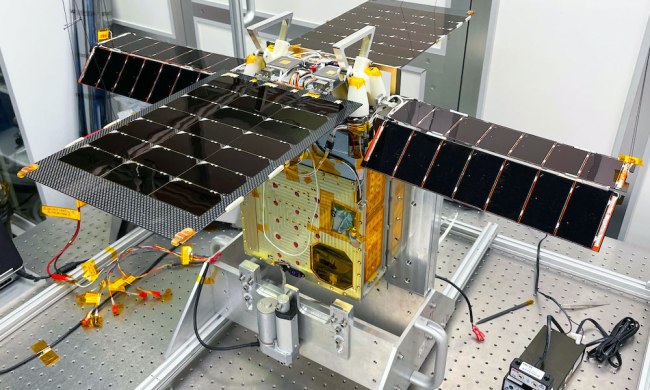Although huge amounts of time and money have been invested in sending humans to space, we’ve so far only gone as far as the moon.
In recent years, there’s been much talk about sending humans to Mars, a far more ambitious mission considering the distance from Earth and the red planet’s harsh conditions.
Looking way, way ahead, NASA’s Goddard Space Flight Center has imagined how crewed trips could one day be more commonplace, taking humans to far-flung places in our solar system, and even beyond.
Goddard’s video (hit the player’s “CC” button for information on what you’re looking at) offers a cool look at the kind of wild space adventures that could be taking place many years from now. The team behind the video imagines communities living on the moon and Mars, and wild space tourism rides to places like Enceladus, Saturn’s sixth-largest moon.
Just when you think it couldn’t get any crazier, a “space kayaker” is shown paddling in the oceans of another faraway moon, while a skydiver is seen hurtling toward exoplanet HD 40307 g.
“At NASA, our mission is to explore,” Goddard says in a message accompanying the video. “We visit destinations in our solar system and study worlds beyond to better understand big questions. How did we get here? Where are we headed? Are we alone?”
Goddard reminds us that while robotic explorers have been touring our solar system for decades, “the only place beyond Earth where humans have stood is the moon. That’s also the next place we’ll send astronauts. But not the last. While humans haven’t yet visited Mars, we’re planning to add boot prints to the rover tire tracks there now.”
Looking into the distant future, Goddard wants us to imagine how life might one day be, though it admits that with the technology currently available, the adventures depicted in its video appear “fanciful.”
Still, hundreds of years ago, anyone who pointed at the moon and said we’d one day walk on its surface would’ve been told to go and have a lie-down. So who knows how far humans will travel from Earth generations from now … not sure about the kayaking though.


